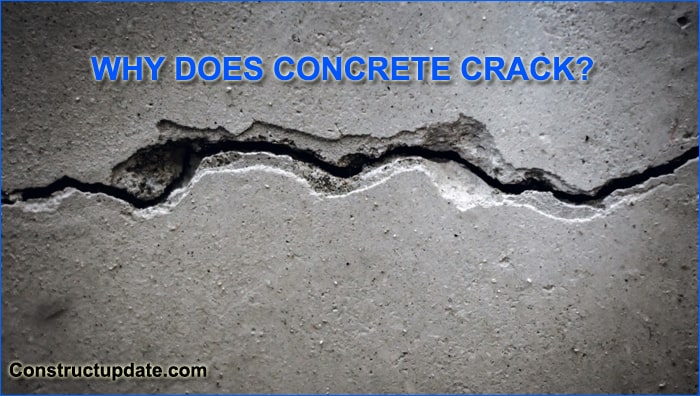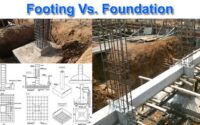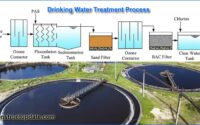Reason for Cracks in Concrete Structure | Cracked Concrete Causes | Why Does Concrete Cracks
Concrete is one of the most resilient and long-lasting materials you can utilise around your home when placed properly. However, it is crucial that concrete installers adhere to accepted standards for the laying of concrete. Concrete that is long-lasting, strong, and resistant to cracks does not appear by chance.
Why Does Concrete Cracks Occur – Following are the Main Reasons for Concrete Cracks
The information that follows can help you identify cracked concrete, but if you’d like a professional’s opinion, speak with a concrete contractor in your area for a hands-on evaluation.

1. Excess water in the mix
For concrete to reach its optimum strength, little water is needed. However, a sizable portion of the concrete used in residential construction has too much water added to it on the job site. To make the concrete easier to install, this water is injected. The concrete’s strength is also significantly diminished by the additional water.
Cracking is frequently caused by shrinkage. Concrete shrinks as it dries and hardens. This is a result of extra mixing water evaporating. The shrinkage will be larger the wetter or soupier the concrete mix is. Concrete slabs have a maximum shrinkage of 1/2 inch every 100 feet. As a result of this shrinkage, the concrete experiences forces that essentially tear the slab apart. These stresses ultimately result in cracks.
Solution and Prevention You Should Keep in mind:
Be extremely certain you have hired a respectable contractor who will ensure the right mix is poured, or be aware of the maximum amount of water that can be used for the mix the contractor is pouring. It is more expensive to do it right- it just takes more labour to pour tougher combinations.
2. Rapid drying of the concrete
Additionally, the likelihood of cracking will dramatically rise if the slab dries out too quickly. Water is necessary for the chemical reaction that transforms concrete from a liquid or plastic state to a solid state. After you pour the concrete, this hydration—or chemical reaction—keeps going for days or weeks.
By properly curing the slab, you may ensure that the required water is accessible for this reaction.
3. On-the-job concrete poured with an improper strength
Concrete comes in a wide range of strengths. Check the recommended strength for the concrete you are pouring.
4. Lack of control joints
Concrete is assisted in where it should crack by control joints. The joints must not exceed 2-3 times (in feet) the concrete’s thickness and should match the slab’s depth (in inches). Therefore, joints in 4″ concrete should be 8–12′ apart.
Some other reasons also could be caused Concrete Cracks:
- On the frozen ground, never pour concrete.
- Compaction is required in the ground where the concrete will be put.
- Your soil conditions must be taken into account when preparing the subgrade. You can directly pour some flatwork upon the original grade. In other places, a slab must have steel rebar inserted and 6″ of foundation fill.
You will receive quality concrete work if you are aware of what your contractor is doing with each of the issues previously mentioned.
What are Common Types of Concrete Cracks:
Cracks vary in their level of worry. The different varieties of crack are described here along with solutions.
If hairline surface cracks are growing worse over time, posing a risk, gathering dirt, or being ugly, they need to be fixed.
With the right joint placement, shrinkage cracks that develop as the concrete cures can be lessened or even avoided.
Settlement cracks occur when a portion of the concrete sinks because the earth beneath the slab wasn’t compacted adequately.
Concrete must be repaired or replaced if structural cracks are larger than a credit card or that span the entire slab.





